What if any surface can be smart?
Imagine a car where any surface could be smart. Smooth user experience with customizable 3D surface controls, hidden until needed. These light weight controls replace clunky mechanical dials, increasing usability and decreasing driver distraction.
ADAS sensors need to be fully functional in any weather to be reliable. Efficient transparent heaters keep the sensors clear.
The evolution of automotive industry is challenging the interior design of the cars.
Move towards electric vehicles bring more space between the engine compartment and front seats which can be utilized to support the requirements of autonomous driving and living-room type in-car experience. Different driving modes will require different ergonomics. In traditional driving mode, the controls can be easily reached, but when using driving assistants or in autonomous driving mode, the driver should be able to control e.g. the displays while reclining. The 3D shaped touch surfaces offer a cutting edge solution for improved ergonomics.
The physical knobs and dials can be replaced with smart 3D touch surfaces enabling discreet controls that can be hidden until needed throughout the cockpit. They can be behind translucent fabrics or leather in doors or center consoles and arm rests. On the steering wheel touch surfaces can also replace mechanical buttons with small 3D shaped displays at the spoke areas. The 3D shaped touch controls in the center consoles can be discreet when in traditional driving mode, but illuminated and activated in autonomous driving mode, offering increased user experience.
Flat 2D displays can be integrated with 3D shaped touch controls which enable quick tactile use of the display functions resulting in decreased driver distraction, when the focus is not too long in the flat icons. The 3D shapes enable improved safety as the controls can be found and utilized blindly with the help of shapes, like finger guides, grooves, buttons and lights. There are almost no limits to create new kind of enhanced HMI design.
Through connected cars and software-based 3D touch surfaces, the functionalities can be updated, upgraded and personalized, even over the air. This creates great up-sell possibilities for car brands, when the car can be sold as a basic version and upgraded later, for example from a single touch to multitouch with the new functionalities added to same control. The car could be personalized also from controls perspective to suite each user, that is, each user of the car could have the preferred functionalities and colors shown.
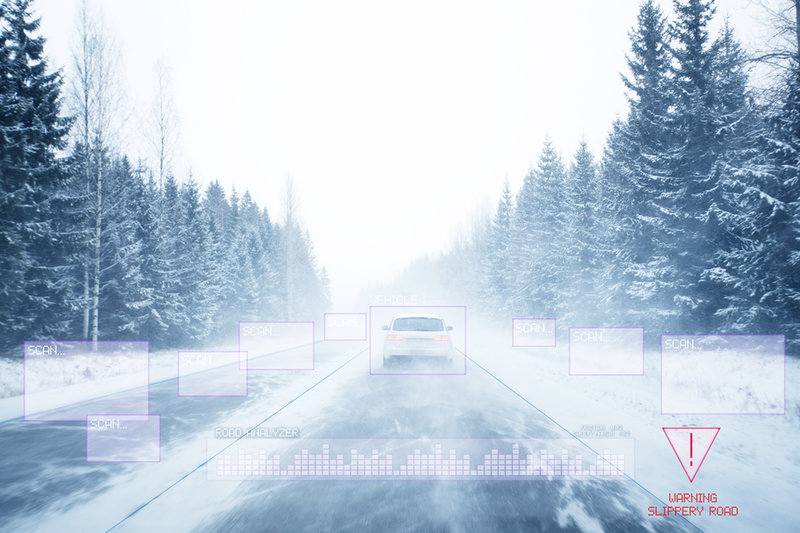
Autonomous driving in any weather
Electric vehicles need to be lighter and more energy conscious than cars with a combustion engine. Earlier the combustion engine created heat that was utilized to warm up the rest of the car. The same situation is with LED lights, which can freeze in cold environments. EV’s do not create this heat, and it would not be economical solution to use the battery for heating.
Autonomous driving and the use of driving aids require new kinds of heating solutions. In order for ADAS sensors and LED lighting to be reliable, they need to function in any weather condition. The light CNB™ film-based 3D heaters can be directly integrated to the heated surface with a simple stack structure. This means less energy consumption, i.e. no waste heating. The transparent and conductive heater keeps efficiently the sensors clear also in frost and humid conditions with efficient electric de-fogging and de-icing. CNB™ Heater offers fast and even heating, where the full heated area remains clear without local hot spots. The highly formable CNB™ Heater enables 360 degree or fish eye sensor visibility. The CNB Heaters are highly transparent and will not cause haze over the transmission light.
Evolution of automotive industry: Canatu's solutions
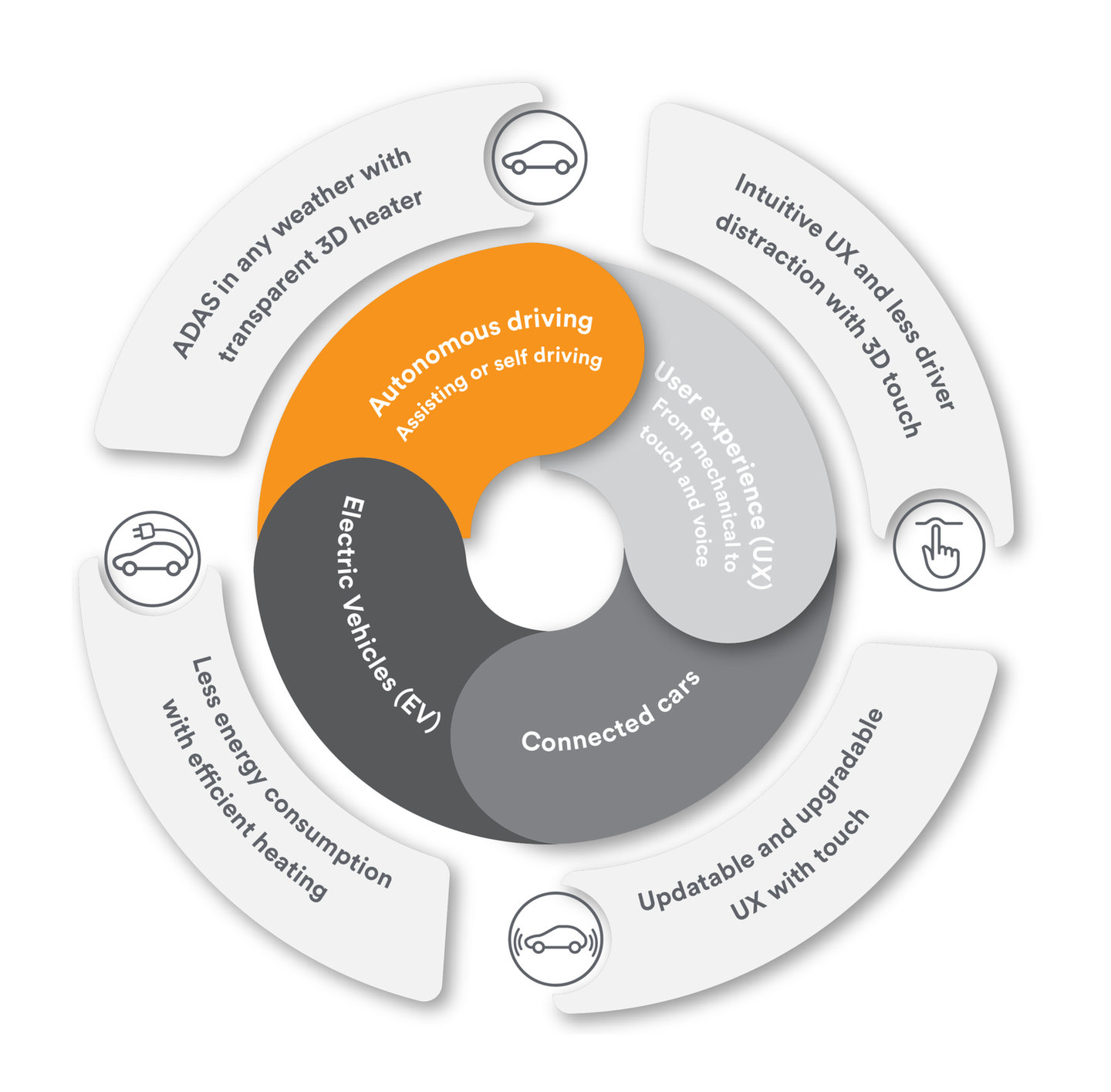
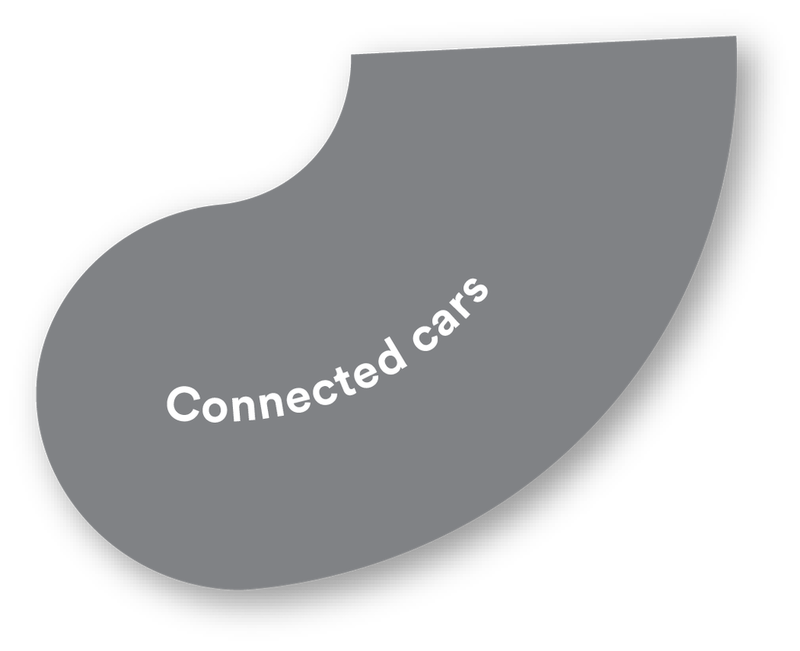
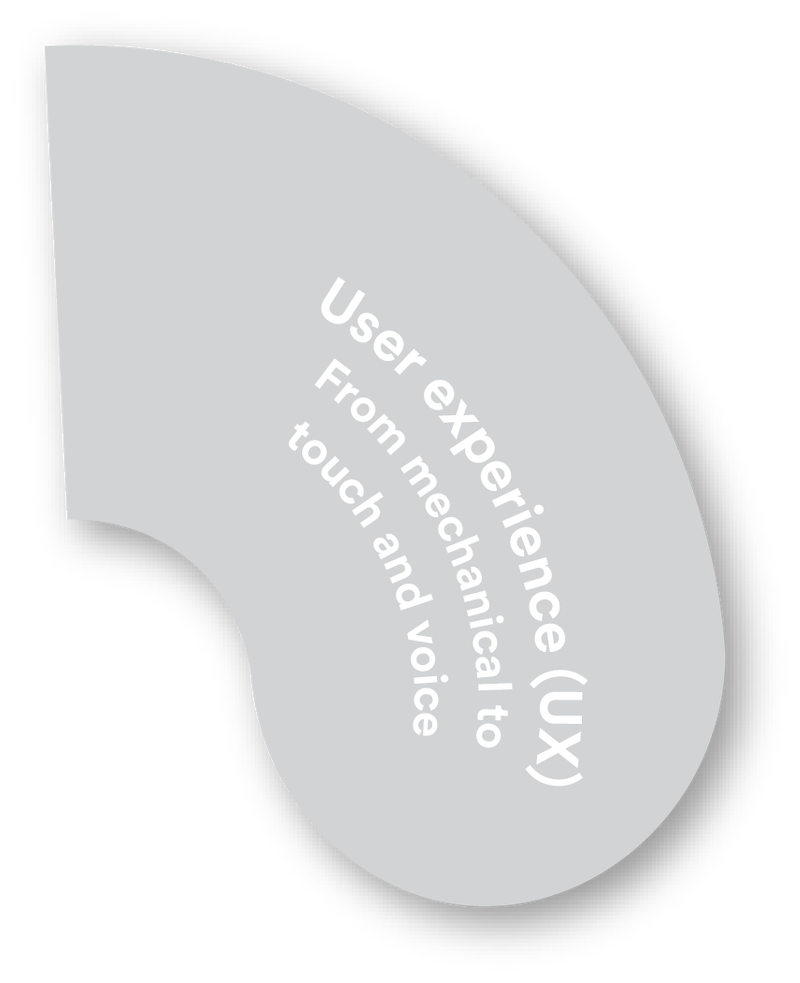
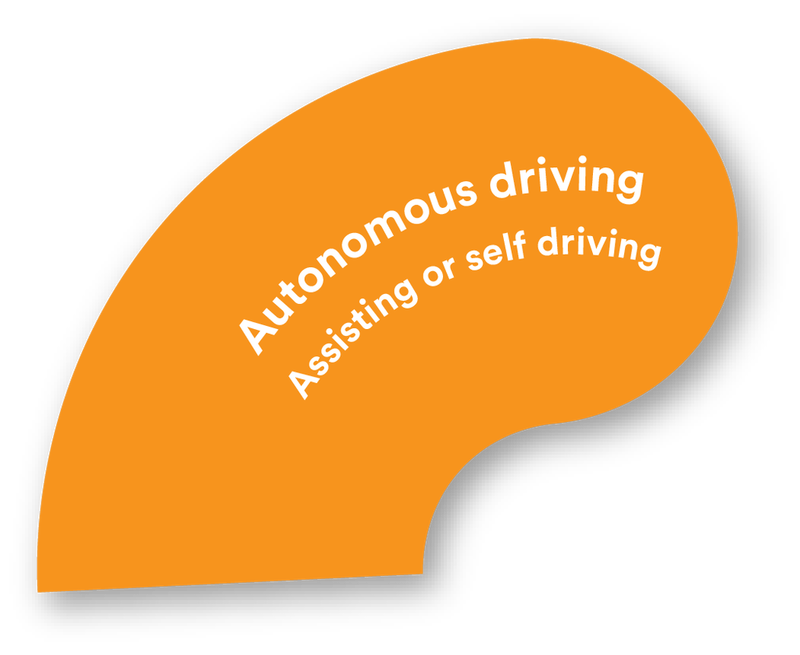

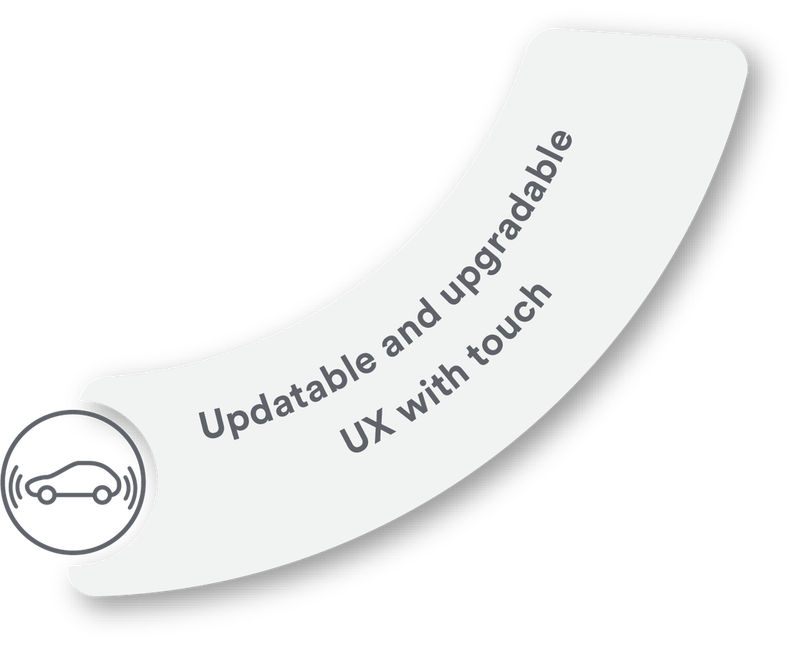
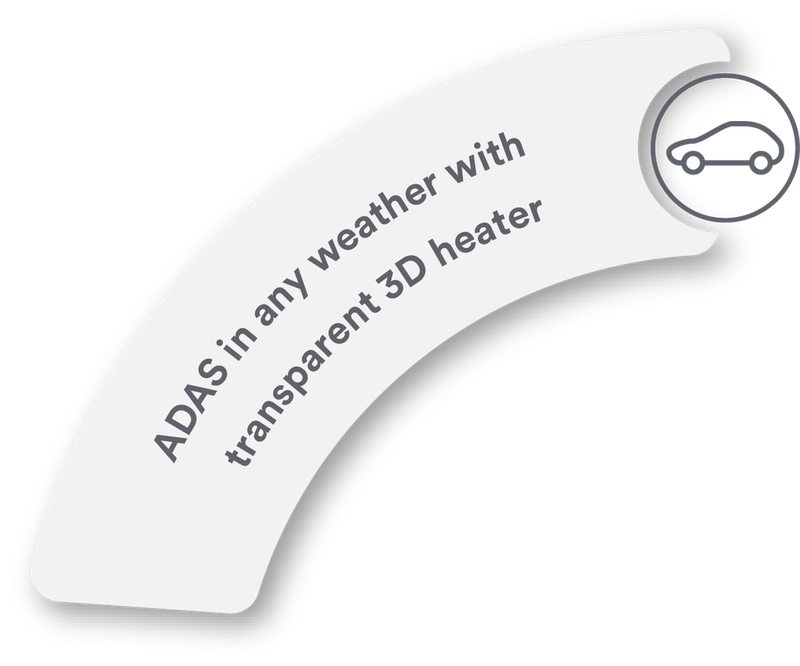
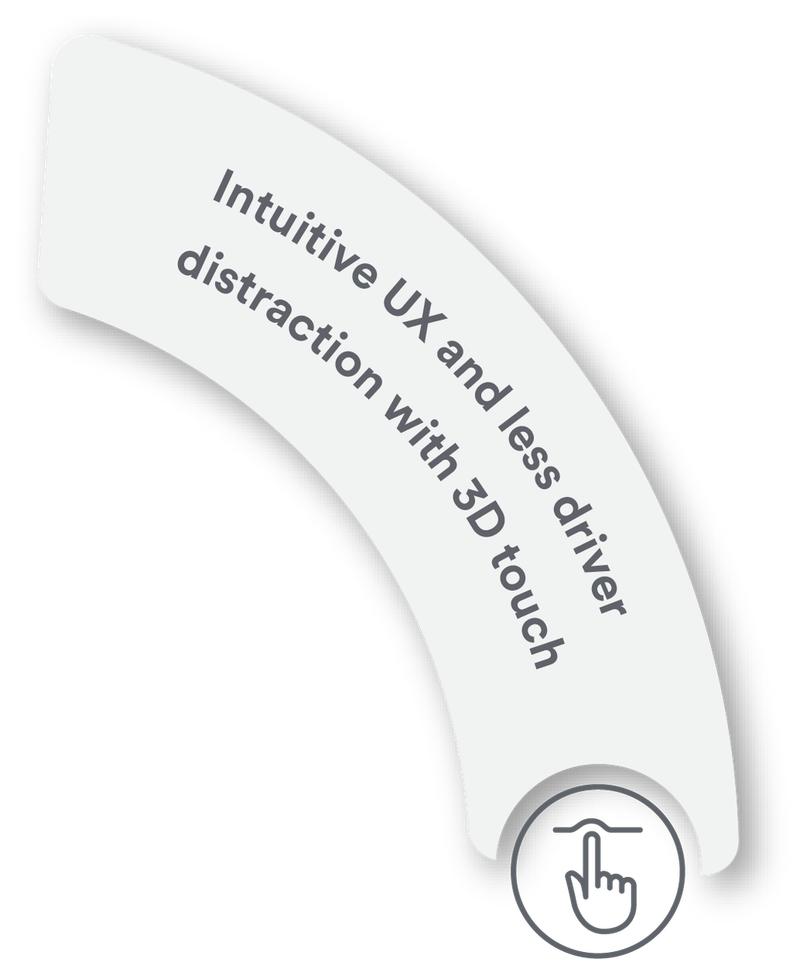
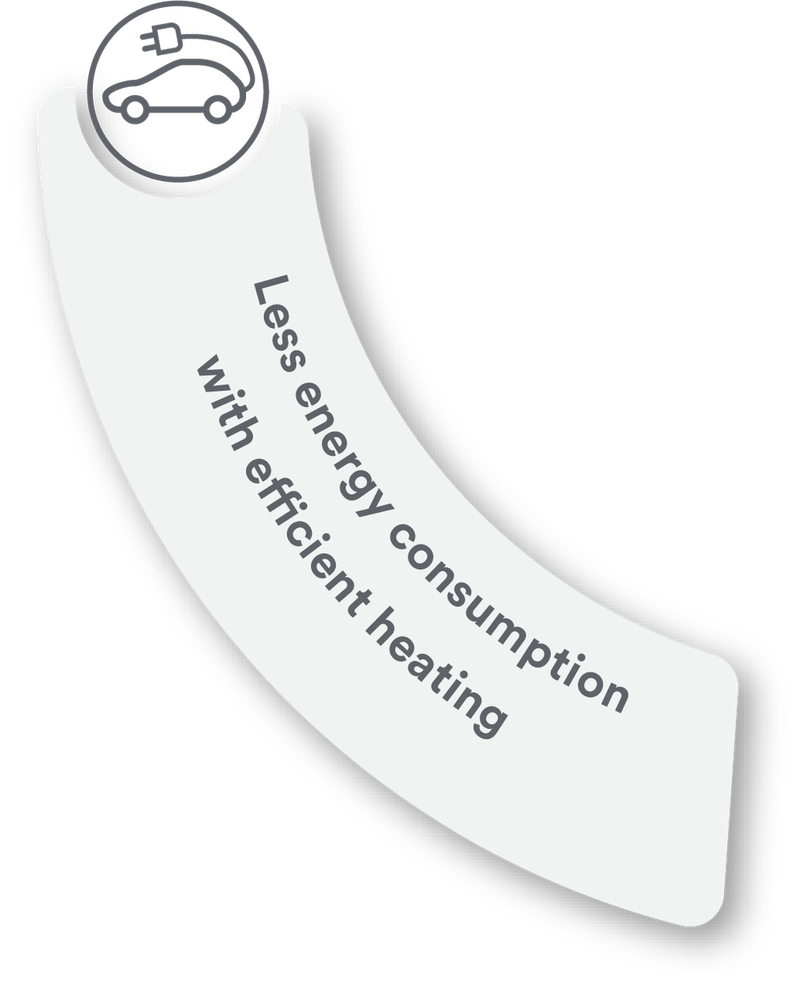
Innovative nanotechnology
Canatu’s highly formable and conductive Carbon NanoBuds® films, in short CNB™ films, enable any area to be transformed into a transparent 3D touch surfaces for use in car interiors. Due to the utilization of carbon, the CNB™ surfaces have low reflectivity and can have a true black until lit effect. The CNB™ can be stretched up to 200% and thermoformed with down to a small 1mm radius. The conductivity and transparency make the CNB™ excellent for surface heaters of for example ADAS sensors.
Mirrorless cars use video systems and dashboard screens to increase the driver’s field of view, typically eliminating the blind spot by stitching together a panoramic view of what is behind and to the side of the car.
Material-wise, we are seeing more centre console screens made of flat and curved glass. Although the use of glass for touchscreens creates a classy look, this illusion is soon shattered by smudgy fingerprints. The HMI (human machine interface) therefore needs greater refinement before glass screens become widespread. Glass screens do not currently provide the user with haptic feedback, causing driver distraction when double-checking activation of functions.
Another reason tomorrow’s car interiors could see more screens is the gradual disappearance of the exterior rearview mirror. Given that wing mirrors add weight, cost and wind resistance (at high speeds) to the car, it is not surprising that some automakers wish to eliminate them thereby creating a sleeker look. As suppliers anticipate a change to mirror regulations, many are developing mirrorless systems using vehicle mounted cameras and dashboard monitors.
Mirrorless cars use video systems and dashboard screens to increase the driver’s field of view, typically eliminating the blind spot by stitching together a panoramic view of what is behind and to the side of the car. Although mirrorless cars will take time to get used to, most solutions we have seen feature high-resolution screens located close to where a driver would glance to check the wing mirror. Some mirrorless technologies assist the driver further by automatically adjusting to reduce sunlight glare or intensifying levels of brightness while parking at night.
With future trends pointing to the elimination of wing mirrors and the addition of screens, such black rectangles can dominate the look and feel of a car’s interior. It has even been disputed as appearing a little dated; the opposite of a luxury interior designer’s objective. To some extent, flexible OLED (Organic Light-Emitting Diode) displays that blend into the interior can help (see below). A balance therefore needs to be struck. Greater use of projecting driver information onto head-up displays (HUDs) and augmented reality windscreens would further reduce dashboard screens.
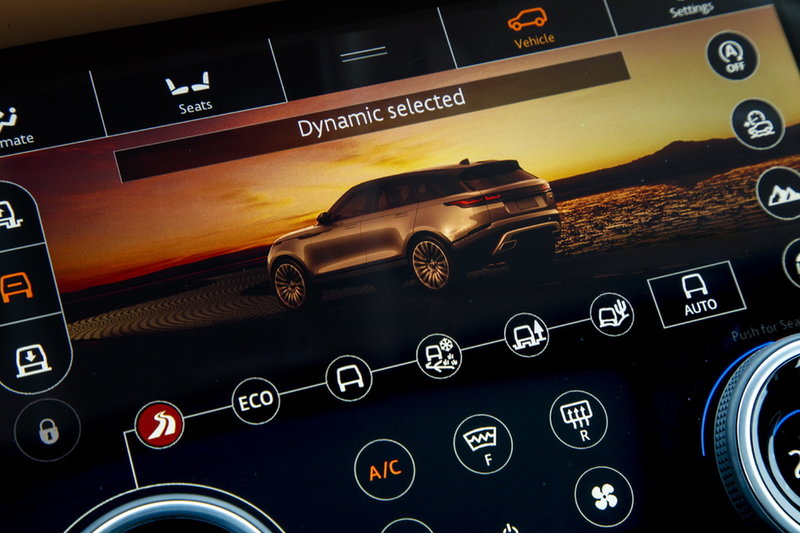
More screens, fewer buttons (Range Rover Velar).
Larger, curved screens
Jump into a new car today and you are almost sure to find a tablet-style touchscreen infotainment system positioned centre stage of the dash. It acknowledges that most of us no longer use maps to find our way around but expect the car to guide us to our destination and remain connected throughout the journey. For example, the Volvo XC90 comes loaded with semi-autonomous and connected car features, most of which are displayed on an intuitive centre console touchscreen.
As with most new technologies, what starts in the luxury market often trickles down the car segments. Inside the new Honda Civic, positioned at the top of the piano-black finish centre console - and drawing the eye as the push start is pressed - is a Honda Connect 2 seven-inch touchscreen, serving as the main point of contact to control the infotainment and climate control functions. This second-generation of Honda’s infotainment and connectivity system incorporates Apple CarPlay and Android Auto integration.
Tomorrow’s cockpits, according toHarman, will have more curved screens designed using OLED technology. The main advantage of an OLED display is that it works without a backlight, enabling it to blend into the interior.
Screens are becoming larger, too. The Tesla Model S features a huge 17-inch screen. But that is just the tip of the iceberg. China’s Byton has debuted its first concept car. A notable feature of the electric SUV is a colossal 49-inch screen stretching the width of the dash.
Whether or not such high-tech wizardry will actually make it onto the road, the above concepts demonstrate the direction the auto industry is taking.
Voice recognition
While giving instructions in our cars is nothing new, putting questions to the likes of Alexa and Cortana while on the road is. Automakers are fast adopting virtual assistants, confirming that speech is becoming the preferred interface for tomorrow’s cockpit.
Voice recognition is seen by some as the answer to eliminate many controls that have traditionally been manually operated. Voice can play an important part of a multimodal HMI solution for inputting information or for cutting through layers on the menus by requesting a function directly. Traditional voice control was centred on a set of fixed commands with catatonic responses which required some level of driver training prior to operation of the system. With the advent of the new low power, high performance microprocessors, smarter voice command engines linked into the HMI logic are now available. Even natural language and grammatical analysis are becoming more achievable.
Voice recognition, although already an option, looks set to play a bigger role as cars gradually become more autonomous.
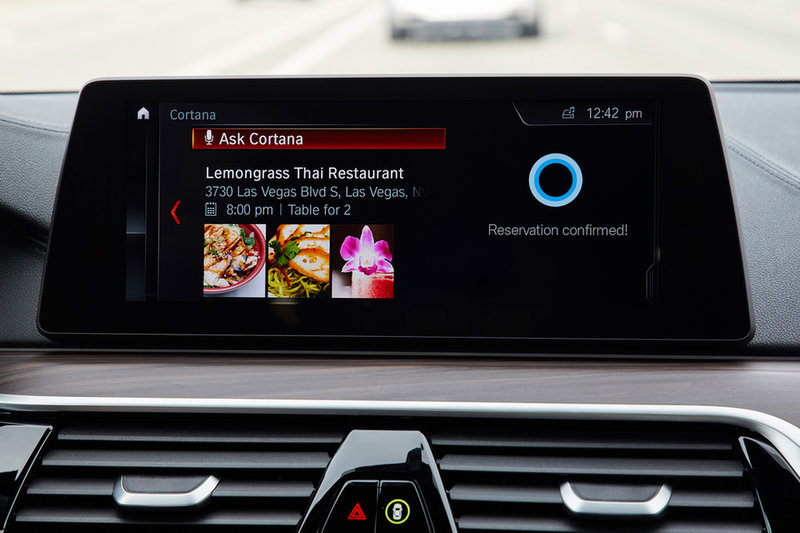
If in doubt, ask: Microsoft’s Cortana AI system forms part of BMW’s Connected Car vision.
Gesture recognition
Looking down at a touchscreen (without haptic feedback) can be distracting. Gesture recognition is therefore said to be the Next Big Thing, regarded as the logical next step from touchscreens and buttons. Gesture control operates via a stereo camera within the cabin that can recognise certain hand movements for pre-programmed adjustments and functions. Rotating your finger clockwise at a screen could turn up the volume or a finger gesture could answer or decline a call. While such novelties will make life simpler for the driver, it should also simplify interior design and liberate space for storage options.
Interior lighting trends
Advances have also been made in the interior lighting department. Not so long ago, interior lighting consisted of central and side headliner lights, complemented by low-level ambient lighting located mainly in the cockpit area. Today, the accent has changed, thanks to widespread use of LEDs enabling personalisation of car interiors. For example, during night time driving, the Mercedes-Benz E-Class takes on an entirely different feel thanks to the ambient interior LED lighting that can be personalised using a palette of no fewer than 64 colours. It really does start to feel like a cockpit, adding illuminating highlights to the trim, the central display, the front stowage compartment on the centre console, handle recesses, door pockets, front and rear footwells, overhead control panel and mirror triangle.

